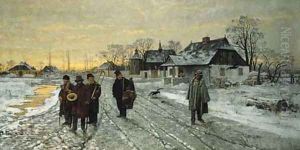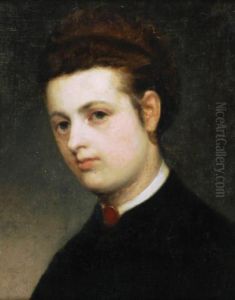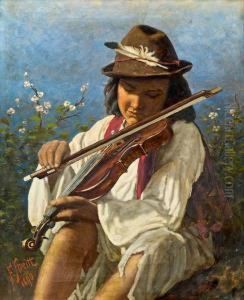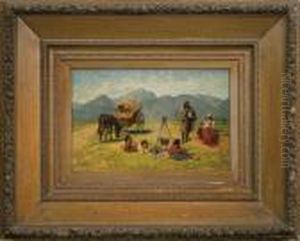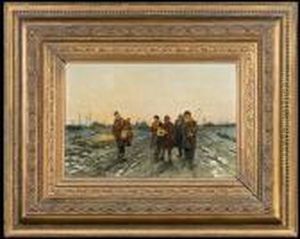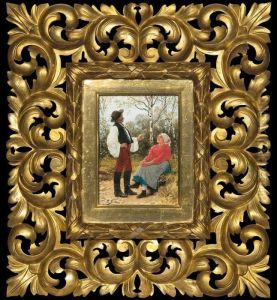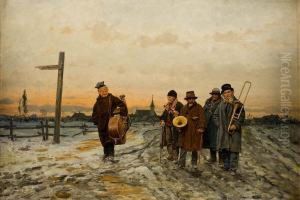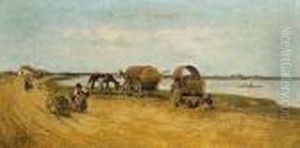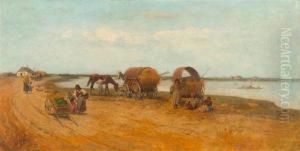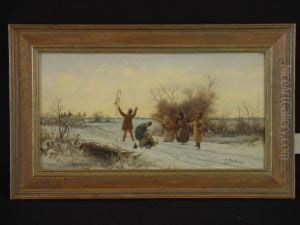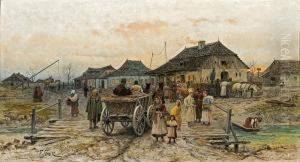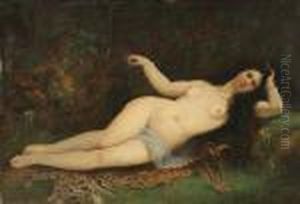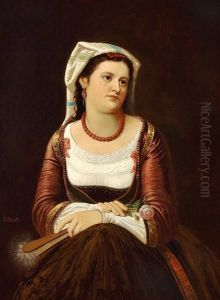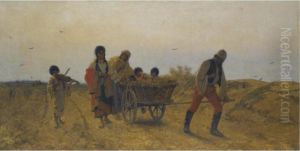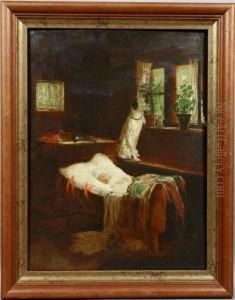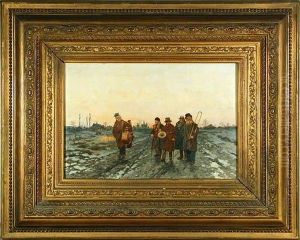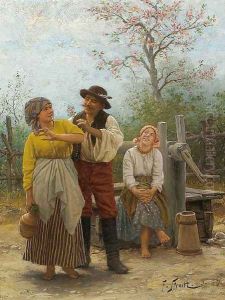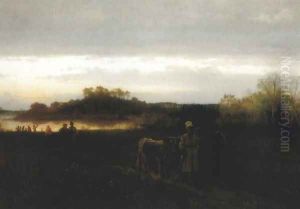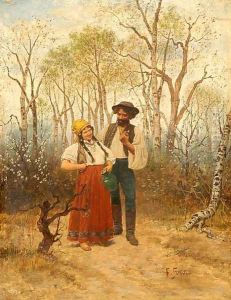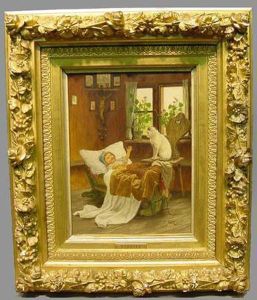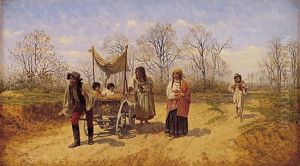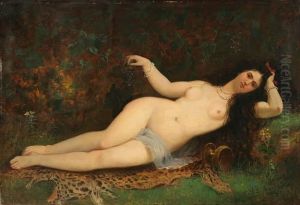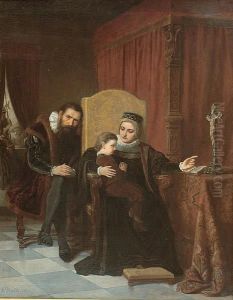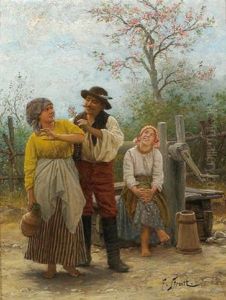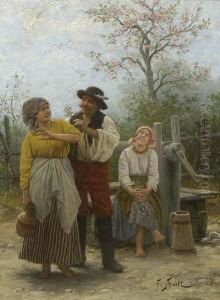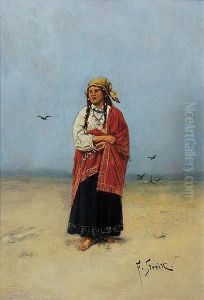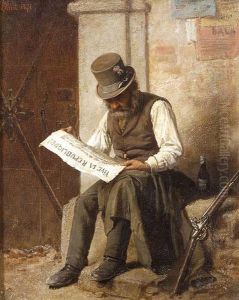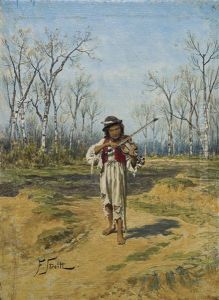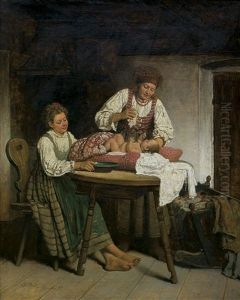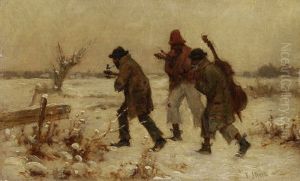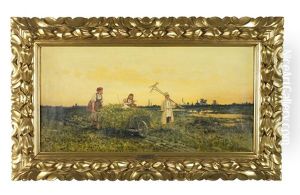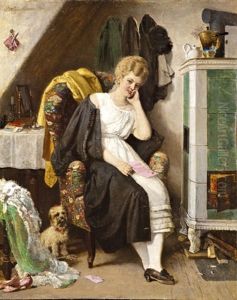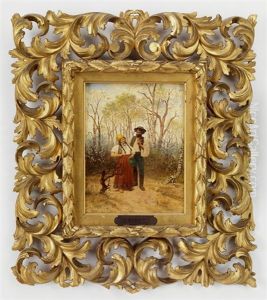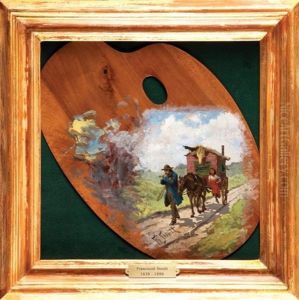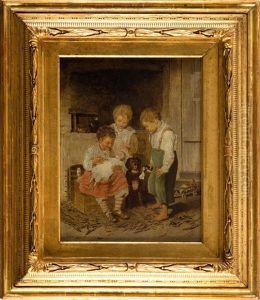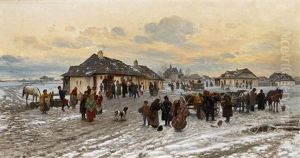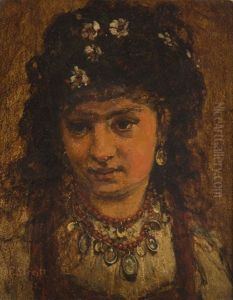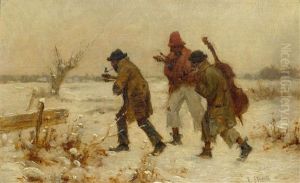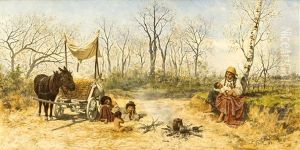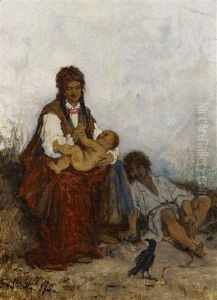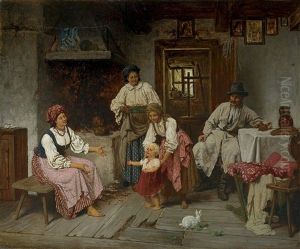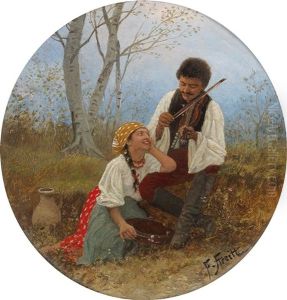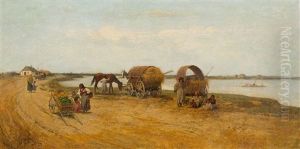Franciszek Streitt Paintings
Franciszek Streitt was a Polish painter born on September 17, 1839, in Czchów, a town in the southern part of Poland. Streitt was recognized for his genre scenes, portraits, and historical paintings. He displayed a remarkable talent for the arts at a young age, which led him to pursue formal education in painting.
Educated initially at the Kraków School of Fine Arts, he later continued his studies at the renowned Academy of Fine Arts in Vienna. During his time in Vienna, he was influenced by the works of the Biedermeier period, and this influence is evident in his early works. Streitt was particularly drawn to capturing the everyday life of people, their customs, and the ambiance of the interiors in which they lived.
After his education, Streitt traveled extensively throughout Europe. He visited Italy, where he was deeply inspired by the Italian masters, and their influence can be seen in his approach to color and composition. His travels also took him to countries like Germany and France, where he further honed his skills and absorbed different artistic styles and techniques.
Streitt's paintings were well-received, and he gained a reputation for his attention to detail and the ability to evoke emotion through his depictions of simple, often rural life. His work was exhibited in many prominent galleries across Europe, and he participated in numerous exhibitions, earning awards and recognition for his artistic contributions.
Franciszek Streitt's dedication to art was not only limited to painting; he was also involved in art education, teaching and inspiring a new generation of artists. Unfortunately, his life was cut short, and he died on April 26, 1890, in Lviv (then part of the Austro-Hungarian Empire, now in Ukraine). Despite his relatively short life, Streitt left behind a rich legacy of works that continue to be appreciated for their historical value and artistic beauty.
